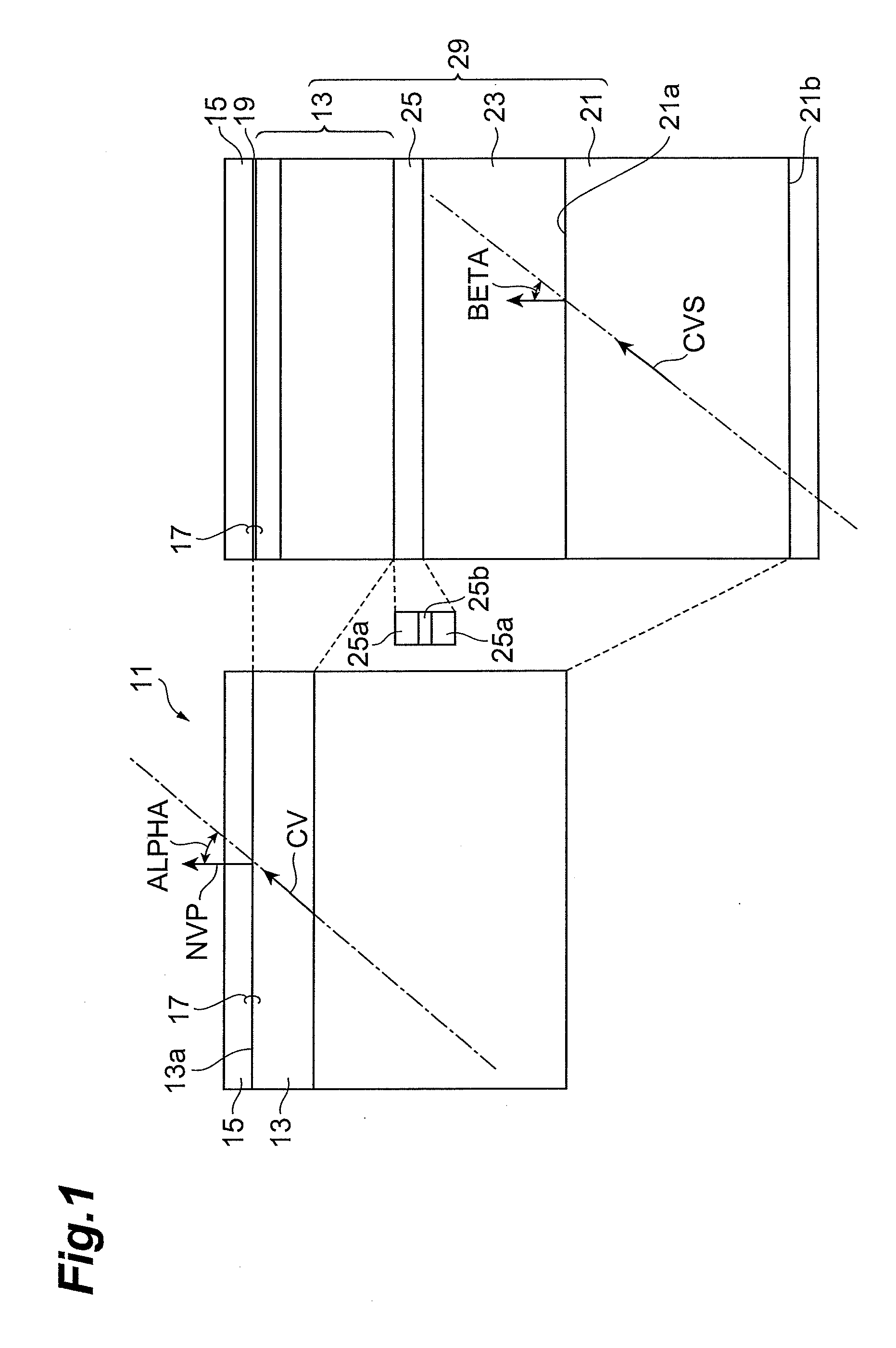Semiconductor device and method for manufacturing semiconductor device
- Summary
- Abstract
- Description
- Claims
- Application Information
AI Technical Summary
Benefits of technology
Problems solved by technology
Method used
Image
Examples
example 1
[0059]An epitaxial substrate having a structure shown in Part (a) of FIG. 3 is made by metalorganic chemical vapor deposition (MOCVD). A GaN buffer layer may be deposited, if necessary, on a semipolar surface having a c-axis tilting toward an m-axis of an n-type GaN substrate by MOCVD. Subsequently, an n-type GaN layer doped with silicium having a thickness of 1 μm, a p-type GaN layer doped with magnesium having a thickness of 0.4 μm, and p+-type GaN layer heavily doped with magnesium having a thickness of 50 nm are deposited.
[0060]Prior to the deposition of a p-type electrode film, a circular resist is formed by photolithography. Subsequently, in the same deposition system, a platinum film having a thickness of 50 nm and a Ni / Au film having a thickness of 5 nm / 11 nm are deposited by electron beam evaporation and resistive heating, respectively. The degree of vacuum is about 1×10−6 Torr.
[0061]After the deposition, the resist is lifted off in acetone to form platinum electrodes havin...
example 2
[0065]The interface between GaN and an electrode is analyzed by X-ray photoelectron spectroscopy (XPS). An epitaxial substrate with a surface of c-plane (device A for evaluation) and a semipolar epitaxial substrate (device B for evaluation) are deposited by epitaxy as in Example 1. A platinum electrode is deposited by electron beam evaporation on each of these epitaxial substrates (devices A and B) to form a substrate product with a surface of c-plane (device C for evaluation) and a semipolar substrate product (device D for evaluation). In addition, a Ni / Au film is deposited on each of these epitaxial substrates (devices A and B) by electron beam evaporation and then resistive heating to form a substrate product with a surface of c-plane (device E for evaluation) and a semipolar substrate product (device F for evaluation).
[0066]In the manufacturing process of all the devices for evaluation, the epitaxial substrates are subjected to the organic cleaning and acid cleaning prior to the...
example 3
[0070]In order to confirm the dependence of semipolar characteristics on the tilt angle, four semipolar substrates having a tilt angle of +5 degrees, −5 degrees, +10 degrees, and −10 degrees, respectively, from the (20-21) plane, and a not-polar substrate with a surface of m-plane are prepared. Epitaxial substrates are made by using these GaN substrates as in Example 2. The epitaxial substrates are analyzed by using the XPS as in Example 2. The results demonstrate that non-alloy platinum electrode formed on an epitaxial substrate using a semipolar or non-polar GaN substrate has a superior interface to an alloy electrode on a c-plane. Within the range of the tilt angle, no significant difference is observed in electrical properties measured. Consequently, a non-alloy electrode formed on a substrate having a not-polar (i.e. semipolar or non-polar) principal surface having different characteristics from a polar c-plane has satisfactory ohmic characteristics.
[0071]As described above, th...
PUM
 Login to View More
Login to View More Abstract
Description
Claims
Application Information
 Login to View More
Login to View More - R&D
- Intellectual Property
- Life Sciences
- Materials
- Tech Scout
- Unparalleled Data Quality
- Higher Quality Content
- 60% Fewer Hallucinations
Browse by: Latest US Patents, China's latest patents, Technical Efficacy Thesaurus, Application Domain, Technology Topic, Popular Technical Reports.
© 2025 PatSnap. All rights reserved.Legal|Privacy policy|Modern Slavery Act Transparency Statement|Sitemap|About US| Contact US: help@patsnap.com



